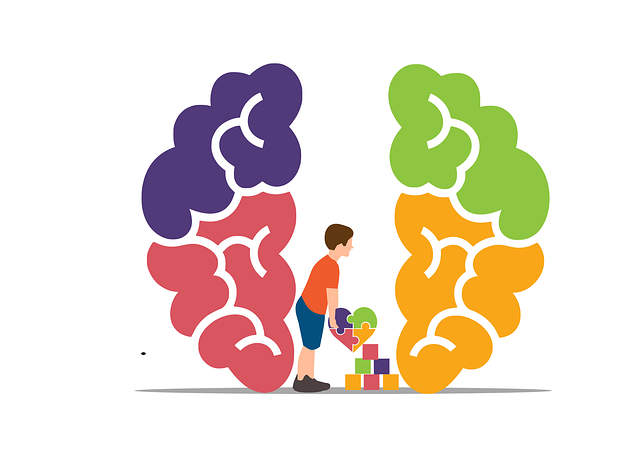Mental wellness programs, like Golden Phobias Therapy (GPT), use diverse evaluation methods—from structured interviews and self-report measures to qualitative data and longitudinal studies—to assess their effectiveness. Direct assessments uncover specific phobia details and treatment needs, while indirect measurements track broader impacts on mental health over time. Qualitative research provides deep insights into participants' lived experiences and complex mental health issues, enhancing GPT's refinement and relevance. Longitudinal studies offer a comprehensive view of well-being progress, ensuring tailored interventions based on empirical evidence for continuous program improvement.
Mental wellness programs are essential tools for promoting holistic well-being, especially in addressing specific challenges like Golden Phobias. This article explores various evaluation methods to gauge the effectiveness of such programs. From direct assessment techniques tailored for Golden Phobias Therapy to indirect measurement approaches and qualitative insights, each plays a unique role. Longitudinal studies further highlight the progress over time, offering a comprehensive understanding of mental wellness program success.
- Understanding Mental Wellness Programs and Their Evaluation
- Direct Assessment Techniques for Golden Phobias Therapy
- Indirect Measurement Approaches in Evaluating Program Effectiveness
- Qualitative Methods: Uncovering Deep-Rooted Issues and Success Stories
- Longitudinal Studies and Tracking Progress Over Time
Understanding Mental Wellness Programs and Their Evaluation

Mental wellness programs are designed to support individuals in managing and improving their mental health and overall well-being. These programs can take various forms, from therapeutic interventions like Golden Phobias Therapy, which tackles specific fears and anxieties, to broader initiatives focused on Mental Illness Stigma Reduction Efforts and Mental Health Education Programs Design. The goal is to create inclusive environments that foster resilience and promote healthy coping mechanisms.
Evaluation of these programs is a critical step in understanding their effectiveness and impact. By assessing the outcomes, participants’ feedback, and changes in mental health symptoms, researchers and practitioners can gauge the success of the initiatives. This process involves utilizing qualitative and quantitative methods to capture the nuances of mental wellness improvement. Empathy Building Strategies, for instance, can be evaluated through participant interviews and surveys, providing insights into how these programs enhance understanding and compassion among individuals grappling with mental health challenges.
Direct Assessment Techniques for Golden Phobias Therapy

Direct assessment techniques play a crucial role in evaluating the effectiveness of Golden Phobias Therapy (GPT). These methods allow therapists to gain an in-depth understanding of a client’s fear, its triggers, and the impact it has on their daily life. One such technique involves structured clinical interviews, where trained professionals delve into the details of the phobia, including its onset, duration, and severity. This process helps identify specific fears and the associated anxiety disorders, which is essential for tailoring treatment plans in mental wellness programs.
Moreover, compassion cultivation practices, a core component of GPT, can be assessed directly through self-report measures and observational techniques. These tools capture clients’ perceptions of their own compassionate responses and their ability to extend kindness to themselves and others. In conjunction with Trauma Support Services, direct assessment ensures that the therapy addresses both the root causes of phobias and fosters resilience in individuals seeking mental wellness.
Indirect Measurement Approaches in Evaluating Program Effectiveness

Indirect measurement approaches play a crucial role in evaluating the effectiveness of mental wellness programs, especially when assessing the impact of innovative therapies like Golden Phobias Therapy (GPT). Unlike direct measures that gauge immediate outcomes, these methods capture long-term changes and participant perceptions. For instance, tracking improvements in general health, work performance, or social interactions over time can provide valuable insights into GPT’s indirect effects on mental wellness.
One popular indirect measurement approach is the use of self-report questionnaires and surveys that assess symptoms of stress, anxiety, and depression before and after program participation. Additionally, crisis intervention guidance and stress reduction methods can be evaluated through participant feedback on their effectiveness in managing challenging situations. Even Self-Awareness Exercises (SAE), integrated into GPT, could be measured indirectly by observing increased self-reflection and personal growth reported by participants over the course of the program.
Qualitative Methods: Uncovering Deep-Rooted Issues and Success Stories

Qualitative methods play a pivotal role in evaluating mental wellness programs by providing insights into individuals’ lived experiences and personal narratives. Through techniques like in-depth interviews, focus groups, and case studies, participants can openly share their unique journeys, including challenges and triumphs. This approach is particularly valuable for understanding the complexities of mental health issues, such as deep-rooted fears and phobias that might not surface in quantitative assessments. By exploring these personal stories, researchers and therapists can uncover underlying triggers, beliefs, and coping mechanisms, which are essential for tailoring effective interventions.
For instance, when evaluating a program focused on Golden Phobias Therapy, qualitative data may reveal the transformative impact of communication strategies and conflict resolution techniques. Participants might share how learning to express their fears and negotiate difficult situations has improved their overall well-being and quality of life. These rich narratives not only highlight successful outcomes but also provide guidance for refining therapy methods, ensuring they remain relevant and impactful in addressing various mental health concerns, including stress reduction.
Longitudinal Studies and Tracking Progress Over Time

Longitudinal studies play a pivotal role in evaluating mental wellness programs like Golden Phobias Therapy, offering a comprehensive view of an individual’s progress over extended periods. By tracking participants’ well-being at various intervals, researchers can identify trends and patterns that reveal the effectiveness of the program. This method is invaluable for understanding not just immediate improvements but also the long-term sustainability of mental health initiatives. Such studies often involve regular assessments, allowing for a detailed examination of how self-care practices and stress reduction methods implemented through therapy translate into daily life, including positive thinking strategies adopted by the individuals.
This longitudinal approach facilitates a nuanced understanding of mental wellness journeys, showcasing whether the program’s impact is fleeting or yields enduring benefits. It also provides insights into potential areas for improvement within the therapy framework, ensuring continuous refinement based on empirical evidence. By following participants’ progress over time, researchers can better tailor interventions to individual needs, enhancing overall program efficacy and contributing to a more robust mental wellness ecosystem.
Evaluating mental wellness programs, such as Golden Phobias Therapy, is a multifaceted process that combines direct assessment, indirect measurement, qualitative inquiry, and longitudinal tracking. Each method offers unique insights into program effectiveness, enabling comprehensive understanding of participant progress and success stories. By employing these diverse evaluation techniques, practitioners can tailor interventions to meet individual needs, ultimately enhancing mental wellness outcomes.














